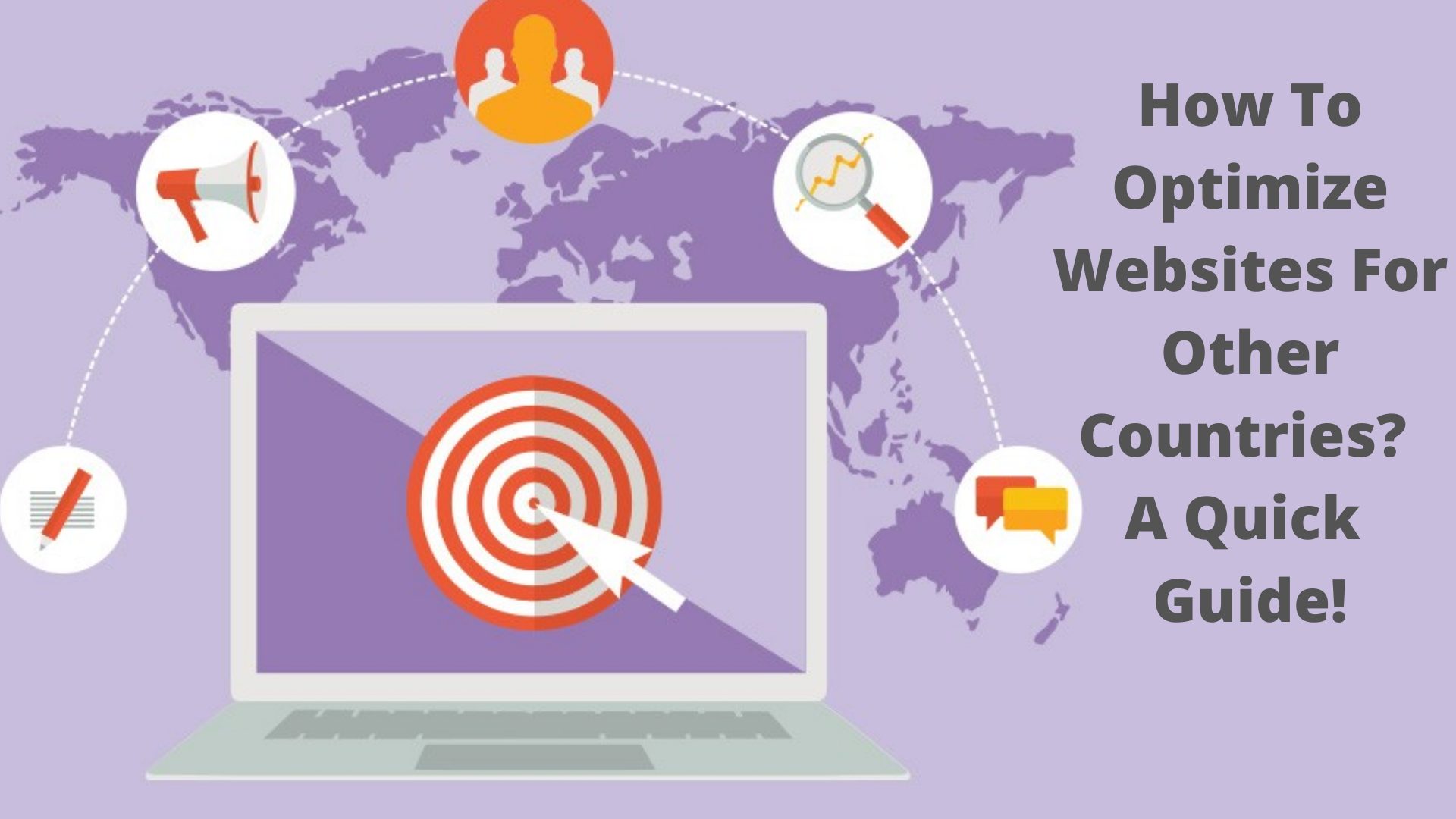How To Optimize Websites For Other Countries? A Quick Guide!
You analyze your metrics and evaluate the insights received. All these take you to one conclusion. Most of your traffic comes from abroad. At this, you ponder upon the next step, to fulfill the requirements of your international audience. The question here is; how to optimize websites for other countries?
How To Understand The Concept?
International search engine optimization is a mechanism that announces to search engines that you aim to expand your online presence to certain countries. You tell Google and other search engines the nations and the languages your target. The process, in theory, may appear confusing. But you may be doing it all the while.
For instance, if you perceive international website optimization as geo-targeting, you appear to aim to concentrate in other languages, but not in countries.
Begin with the following if you plan to optimize your website for other countries and target different languages:
- To target a particular country, specify it in a URL that is international-friendly.
- To target a language, use the required number of language tags. Done this, write and publish engaging content on your website.
These are the two must-haves for your website, especially if you are a beginner in the field.
Here are a few more helpful tips in this regard:
✳ Perform a keyword research
Keyword research is an essential element of website optimization for an international audience. This assists in your efforts to locate the right keywords to use on your website. The Internet abounds in tools designed to help webmasters. Choose the one you feel will fulfill your requirements.
Aim for long-tail keywords. They, according to experts, produce desired results at the earliest. They help you understand what your prospective leads are looking for on the website.
Upon completion of the process, translate your findings to your target language.
You may be tempted to entrust the task with an automated translator. But stay safe, a native speaker is the best choice.
✳ Don’t use multiple languages on one webpage
The prospect may appear tempting. For instance, some may use original language for the main content. But navigational content may appear in a different language. In another scenario, the main content may appear in a different language and user-generated content may be in the original language.
Both instances confuse and frustrate your international visitors. They understand only part of the webpage. And navigation becomes a daunting task. The result, as you know, is going to be a disaster you would never imagine. Avoid this fatal mistake. Devote a webpage to one language.
✳ Be mindful of the structure of your domain
If you plan to target multiple countries, you need to choose a method to identify each version of your website. Google offers you three choices here:
- Domain name
- Folders
- Subdomains
Using CCTLD (Country Code Top Level Domain name)
Here, you specify the country in your domain name. For instance, .uk is the ccTLD for the United Kingdom.
Using gTLD (Generic Top Level Domain Name)
In this scenario, you use a combination of GTLD and country-specific sub-domain to indicate a particular country.
This will appeal to your visitors who speak English.
See to it that the structure you apply is acceptable to the search engines you prefer. Google, for instance, offers detailed guides in this regard. Read them with care before trying the methods given above. Doing this eliminates errors that attract penalties.
✳ Avoid auto-redirecting visitors to a specific version of your website
Certain websites use the IP address of visitors, decide their location and auto-redirect them to a page translated into their perceived spoken language. This is a flawed practice. Certain countries speak multiple languages. Besides, identifying IP addresses may go wrong. To make matters worse, the visitor may not know the language your website automatically defines for the person. The smart practice is to give your visitors the freedom to manually switch to their preferred language.
Finally, refrain from using scripts or cookies to display different languages. Search engines have not yet learned to index dynamic content. And your visitors may not detect them.

